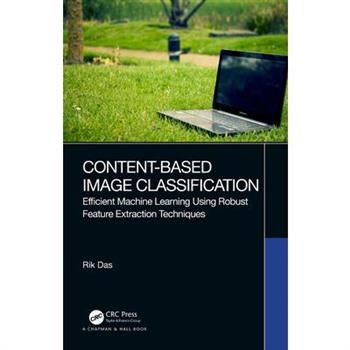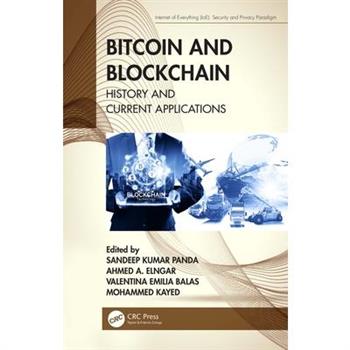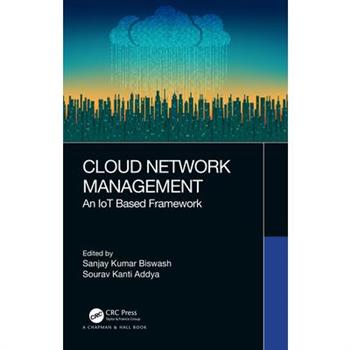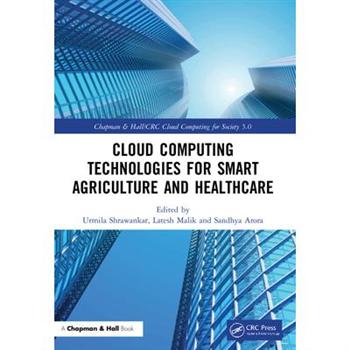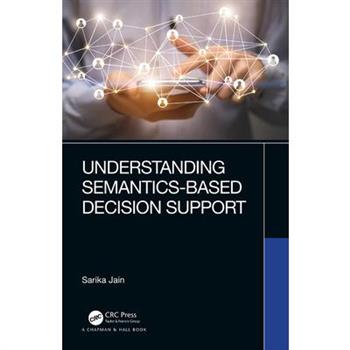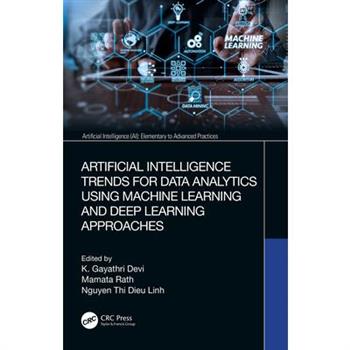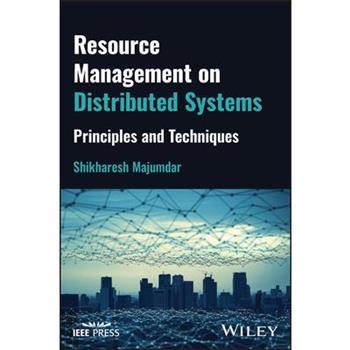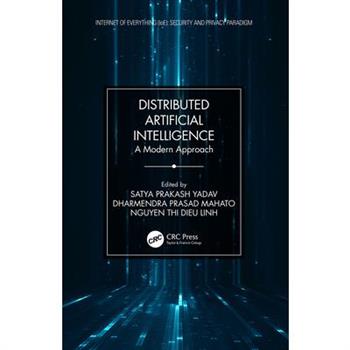Content-Based Image Classification
Content-Based Image Classification: Efficient Machine Learning Using Robust Feature Extraction Techniques is a comprehensive guide to research with invaluable image data. Social Science Research Network has revealed that 65% of people are visual learners. Research data provided by Hyerle (2000) has clearly shown 90% of information in the human brain is visual. Thus, it is no wonder that visual information processing in the brain is 60,000 times faster than text-based information (3M Corporation, 2001). Recently, we have witnessed a significant surge in conversing with images due to the popularity of social networking platforms. The other reason for embracing usage of image data is the mass availability of high-resolution cellphone cameras. Wide usage of image data in diversified application areas including medical science, media, sports, remote sensing, and so on, has spurred the need for further research in optimizing archival, maintenance, and retrieval of appropriate image content to leverage data-driven decision-making. This book demonstrates several techniques of image processing to represent image data in a desired format for information identification. It discusses the application of machine learning and deep learning for identifying and categorizing appropriate image data helpful in designing automated decision support systems.The book offers comprehensive coverage of the most essential topics, including: Image feature extraction with novel handcrafted techniques (traditional feature extraction) Image feature extraction with automated techniques (representation learning with CNNs) Significance of fusion-based approaches in enhancing classification accuracy MATLAB(R) codes for implementing the techniques Use of the Open Access data mining tool WEKA for multiple tasks The book is intended for budding researchers, technocrats, engineering students, and machine learning/deep learning enthusiasts who are willing to start their computer vision journey with content-based image recognition. The readers will get a clear picture of the essentials for transforming the image data into valuable means for insight generation. Readers will learn coding techniques necessary to propose novel mechanisms and disruptive approaches. The WEKA guide provided is beneficial for those uncomfortable coding for machine learning algorithms. The WEKA tool assists the learner in implementing machine learning algorithms with the click of a button. Thus, this book will be a stepping-stone for your machine learning journey. Please visit the author's website for any further guidance at https: //www.rikdas.com/
Bitcoin and Blockchain
In recent years, blockchain development has grown quickly from the original Bitcoin protocol to the second-generation Ethereum platform, and to today's process of building third-generation blockchains. During this evolution, we can see how blockchain technology has evolved from its original form as a distributed database to becoming a fully fledged, globally distributed, cloud computing platform. This book traces the past, present, and future of blockchain technology. Presents the knowledge and history of Bitcoin Offers blockchain applications Discusses developing working code for real-world blockchain applications Includes many real-life examples Covers the original Bitcoin protocol to the second-generation Ethereum platform Bitcoin and Blockchain: History and Current Applications is a useful reference for students, business schools, research scholars, practitioners, and business analytics professionals.
SDN-Supported Edge-Cloud Interplay for Next Generation Internet of Things
This book provides a wide range of research directions in the field of edge-cloud computing, SDN, and IoT. It is a starting point for those involved in this research domain and explore burning issues related to network congestion, traffic management, latency, QoS, scalability, security, and controller placement problems etc.
Edge Computing
This reference text introduces concepts of edge computing and its integration with blockchain technology, cloud computing, and internet of things (IoT). It will serve as a useful text for senior undergraduate, graduate students and professionals in the fields of electrical engineering, electronics engineering, and computer science.
Document Analysis and Recognition - Icdar 2024 Workshops
This two-volume set LNCS 14935-14936 constitutes the proceedings of International Workshops co-located with the 18th International Conference on Document Analysis and Recognition, ICDAR 2024, held in Athens, Greece, during August 30-31, 2024. The total of 30 regular papers presented in these proceedings were carefully selected from 46 submissions. Part I contains 16 regular papers that stem from the following workshops: ICDAR 2024 Workshop on Automatically Domain-Adapted and Personalized Document Analysis (ADAPDA); ICDAR 2024 Workshop on Advanced Analysis and Recognition of Parliamentary Corpora (ARPC); ICDAR 2024 Workshop on coMics ANalysis, Processing and Understanding (MANPU). Part II contains 14 regular papers that stem from the following workshops: ICDAR 2024 Workshop on Computational Paleography (IWCP); ICDAR 2024 Workshop on Machine Vision and NLP for Document Analysis (VINALDO).
Computational Intelligence for Information Retrieval
This book provides a thorough understanding of the integration of computational intelligence with information retrieval including content-based image retrieval using intelligent techniques, hybrid computational intelligence for pattern recognition, intelligent innovative systems, and protecting and analysing big data on cloud platforms. The book aims to investigate how computational intelligence frameworks are going to improve information retrieval systems. The emerging and promising state-of-the-art of human-computer interaction is the motivation behind this book. The book covers a wide range of topics, starting from the tools and languages of artificial intelligence to its philosophical implications, and thus provides a plethora of theoretical as well as experimental research, along with surveys and impact studies.Further, the book aims to showcase the basics of information retrieval and computational intelligence for beginners, as well as their integration, and challenge discussions for existing practitioners, including using hybrid application of augmented reality, computational intelligence techniques for recommendation systems in big data, and a fuzzy-based approach for characterization and identification of sentiments.
Recommender Systems
Recommender systems use information filtering to predict user preferences. They are becoming a vital part of e-business and are used in a wide variety of industries, ranging from entertainment and social networking to information technology, tourism, education, agriculture, healthcare, manufacturing, and retail. Recommender Systems: Algorithms and Applications dives into the theoretical underpinnings of these systems and looks at how this theory is applied and implemented in actual systems. The book examines several classes of recommendation algorithms, including Machine learning algorithms Community detection algorithms Filtering algorithms Various efficient and robust product recommender systems using machine learning algorithms are helpful in filtering and exploring unseen data by users for better prediction and extrapolation of decisions. These are providing a wider range of solutions to such challenges as imbalanced data set problems, cold-start problems, and long tail problems. This book also looks at fundamental ontological positions that form the foundations of recommender systems and explain why certain recommendations are predicted over others. Techniques and approaches for developing recommender systems are also investigated. These can help with implementing algorithms as systems and include A latent-factor technique for model-based filtering systems Collaborative filtering approaches Content-based approaches Finally, this book examines actual systems for social networking, recommending consumer products, and predicting risk in software engineering projects.
Advanced Computational Techniques for Sustainable Computing
Advanced Computational Techniques for Sustainable Computing is considered multi-disciplinary field encompassing advanced computational techniques across several domain, including, Computer Science, Statistical Computation and Electronics Engineering. The core idea of sustainable computing is to deploy algorithms, models, policies and protocols to improve energy efficiency and management of resources, enhancing ecological balance, biological sustenance and other services on societal contexts.The book offers a comprehensive coverage of some of the most essential topics: It provides an insight on building smart sustainable solutions. Includes details of applying mining, learning, IOT and sensor-based techniques for sustainable computing. Entails data extraction from various sources followed with pre-processing of data, and how to make effective use of extracted data for application-based research. Involves practical usage of data analytic language, including R, Python, etc. for improving sustainable services offered by multi-disciplinary domains. Encompasses comparison and analysis of recent technologies and trends. Includes development of smart models for information gain and effective decision making with visualization. The readers would get acquainted with the utilization of massive data sets for intelligent mining and processing. It includes the integration of data mining techniques for effective decision-making in the social, economic, and global environmental domains to achieve sustainability. The implementation of computational frameworks can be accomplished using open-source software for the building of resource-efficient models. The content of the book demonstrates the usage of data science and the internet of things for the advent of smart and realistic solutions for attaining sustainability.
Virtual and Augmented Reality for Architecture and Design
Virtual Reality (VR) is the paradigm wherein people use a computer to interact with something which is not real but provides a real-life experience. It is one of the most advanced interfaces between users and computers, where people can interact with a virtual model in real-time allowing them to visualize and manipulate representations of the real world. Together with Augmented Reality (AR), which adds layers of information to the real environment, VR is a powerful tool for designers and architects in the development of new responsive products, systems and built environments, that meets user's needs. VR and AR are tools that enhance design and architecture students' comprehension about complex and abstract concepts.Informative and accessible, this publication presents, analyses, and discusses the integration and use of Virtual and Augmented Reality within the process of planning, development and research for Design and Architecture. The book also presents case studies with multidisciplinary collaborative work.This book is meant for practitioners and academics alike, as it examines specific aspects related to the use of new technologies in the field of Architecture and Design, highlighting its application in areas such as education, heritage, research, and methodologies, bridging the gap between Architectural and Design abstraction and human requirements through technology.
Soft Computing
This book explores Soft Computing techniques in a systematic manner starting from their initial stage to recent developments in this area. The book presents a survey of the existing knowledge and also the current state-of-the-art development through cutting-edge original new contributions from the researchers.
The Evolving Landscape of Ethical Digital Technology
Information and communication technology (ICT) has the potential to empower, to connect and to include but, alas, this is not always the case as, at times, it restricts, excludes, and divides. This book explores this paradox and examines ethical and social impacts of ICT. It highlights lessons learnt and those still to be learnt.
AI for Behavioural Science
This book is a concise introduction to emerging concepts and ideas found at the intersection of contemporary behavioural science and artificial intelligence. It explores how these disciplines interact, change and adapt to one another, and what the implications of such an interaction are for practice and society.
Cloud IoT
The Internet of Things (IoT) is one of the most disruptive technologies, enabling ubiquitous and pervasive computing scenarios. IoT is based on intelligent self-configuring nodes (also known as things) interconnected in a dynamic and global collaborative network infrastructure. In contrast, Cloud computing has virtually unlimited capabilities in terms of storage and processing power, speed, and is a more mature technology. Due to intrinsic nature of Cloud computing and IoT, they both complement each other. Recently, we are witnessing an increasing trend in exploiting use of both Cloud and IoT together.Salient Features: - Presents latest developments in Cloud computing- Presents latest developments in Internet of Things- Establishes links between interdisciplinary areas where IoT and Cloud both can play a role for improvement of process- Intends to provide an insight into non-IT related models for improvement of lives- Bridges the gap between obsolete literature and current literatureThis book is aimed primarily at advanced undergraduates and graduates working with IoT and cloud computing. Researchers, academicians, policy makers, government officials, NGOs, and industry research professionals would also find the book useful.
Sustainable and Advanced Applications of Blockchain in Smart Computational Technologies
This book concentrates on the sustainable applications of the Blockchain Technology across multiple latest computational knowledge domains. It will target the vast applications of Blockchain in the field of Internet of Things, Artificial Intelligence, and Cybersecurity.
Handbook of Green Engineering Technologies for Sustainable Smart Cities
Handbook of Green Engineering Technologies for Sustainable Smart Cities focuses on the complete exploration and presentation of green smart city applications, techniques, and architectural frameworks. It provides detailed coverage of urban sustainability spanning across various engineering disciplines.The book discusses and explores green engineering technologies for smart cities and covers various engineering disciplines and environmental science. It emphasizes techniques, application frameworks, tools, and case studies. All chapters play a part in the evolution of sustainable green smart cities and present how to solve environmental issues by applying modern industrial IoT solutions.This book will benefit researchers, smart city practitioners, academicians, university students, and policy makers.
Comptia Network+ N10-009 Exam Cram
CompTIA Network+ N10-009 Exam Cram is an all-inclusive study guide designed to help you pass the updated version of the CompTIA Network+ exam. Prepare for test day success with complete coverage of exam objectives and topics, plus hundreds of realistic practice questions. Extensive prep tools include quizzes, Exam Alerts, and our essential last-minute review Cram Sheet. The powerful Pearson Test Prep practice software provides real-time assessment and feedback with two complete exams. Covers the critical information needed to score higher on your Network+ N10-009 exam! Establish network connectivity by deploying wired and wireless devices Learn the purpose of documentation and maintain network documentation Configure common network services Learn basic datacenter, cloud, and virtual networking concepts Monitor network activity and troubleshoot performance and availability issues Implement network security hardening techniques Manage, configure, and troubleshoot network infrastructure Prepare for your exam with Pearson Test Prep Realistic practice questions and answers Comprehensive reporting and feedback Customized testing in study, practice exam, or flash card modes Complete coverage of CompTIA Network+ N10-009 exam objectives
Next-Level Gaming
Explore the Future of GamingStep into a world where artificial intelligence revolutionizes the gaming industry, creating more immersive and personalized experiences for every player.Next-Level Gaming: AI Innovations unveils the groundbreaking journey of AI in video games, right from its humble beginnings to its sophisticated modern applications. Discover how this transformative technology is reshaping the landscape of entertainment and captivating gamers worldwide. This comprehensive guide is a treasure trove for developers, enthusiasts, and anyone fascinated by the intersection of AI and gaming.Dive into the rich history of AI's role in gaming, from early milestones to the masterminds driving innovation. Equip yourself with fundamental concepts, essential programming languages, and the algorithms that form the backbone of today's advanced gaming experiences. Marvel at how AI generates adaptive difficulty levels, creating personalized journeys that keep players on the edge of their seats.Imagine AI-driven NPCs that adapt and evolve based on your actions, or procedurally generated worlds that offer infinite exploration possibilities. Learn from compelling case studies of AI's triumph in popular games and understand how machine learning and neural networks are integral to modern game development.Peek into the future of real-time strategy and simulation games, where AI balances competitive play and enables unparalleled immersion in virtual realities. Uncover the ethical dilemmas inherent in AI gaming, such as privacy concerns, bias, and the pursuit of fairness.Finally, grasp how AI influences the business of gaming-monetization, marketing, and distribution-equipping you with insights to stay ahead in this dynamic field. With hands-on tutorials and recommended tools, you'll be ready to start your journey into AI game development.Next-Level Gaming: AI Innovations promises an enlightening adventure, merging cutting-edge technology with the artistry of game design. Don't miss your chance to explore the next frontier of gaming.
Cloud Network Management
Data storage, processing, and management at remote location over dynamic networks is the most challenging task in cloud networks. Users' expectations are very high for data accuracy, reliability, accessibility, and availability in pervasive cloud environment. It was the core motivation for the Cloud Networks Internet of Things (CNIoT). The exponential growth of the networks and data management in CNIoT must be implemented in fast growing service sectors such as logistic and enterprise management. The network based IoT works as a bridge to fill the gap between IT and cloud networks, where data is easily accessible and available. This book provides a framework for the next generation of cloud networks, which is the emerging part of 5G partnership projects. This contributed book has following salient features, A cloud-based next generation networking technologies. Cloud-based IoT and mobility management technology. The proposed book is a reference for research scholars and course supplement for cloud-IoT related subjects such as distributed networks in computer/ electrical engineering.Sanjay Kumar Biswash is working as an Assistant professor in NIIT University, India. He held Research Scientist position, Institute of Cybernetics, National Research Tomsk Polytechnic University, Russia. He was PDF at LNCC, Brazil and SDSU, USA. He was a visiting researcher to the UC, Portugal. Sourav Kanti Addya is working as an Assistant professor in NITK, Surathkal, India. He was a PDF at IIT Kharagpur, India. He was a visiting scholar at SDSU, USA. He obtained national level GATE scholarship. He is a member of IEEE, ACM.
Cognitive Computing for Internet of Medical Things
This book offers a complete assessment of the present scenario, role, challenges, technologies, and impact of IoMT-enabled smart healthcare systems. It contains chapters discussing various biomedical applications under the umbrella of the IoMT.
Explainable Artificial Intelligence for Smart Cities
Thanks to rapid technological developments in terms of Computational Intelligence, smart tools have been playing active roles in daily life. It is clear that the 21st century has brought about many advantages in using high-level computation and communication solutions to deal with real-world problems; however, more technologies bring more changes to society. In this sense, the concept of smart cities has been a widely discussed topic in terms of society and Artificial Intelligence-oriented research efforts. The rise of smart cities is a transformation of both community and technology use habits, and there are many different research orientations to shape a better future.The objective of this book is to focus on Explainable Artificial Intelligence (XAI) in smart city development. As recently designed, advanced smart systems require intense use of complex computational solutions (i.e., Deep Learning, Big Data, IoT architectures), the mechanisms of these systems become 'black-box' to users. As this means that there is no clear clue about what is going on within these systems, anxieties regarding ensuring trustworthy tools also rise. In recent years, attempts have been made to solve this issue with the additional use of XAI methods to improve transparency levels. This book provides a timely, global reference source about cutting-edge research efforts to ensure the XAI factor in smart city-oriented developments. The book includes both positive and negative outcomes, as well as future insights and the societal and technical aspects of XAI-based smart city research efforts. This book contains nineteen contributions beginning with a presentation of the background of XAI techniques and sustainable smart-city applications. It then continues with chapters discussing XAI for Smart Healthcare, Smart Education, Smart Transportation, Smart Environment, Smart Urbanization and Governance, and Cyber Security for Smart Cities.
Artificial Intelligence and Smart Agriculture Technology
This book was created with the intention of informing an international audience about the latest technological aspects for developing smart agricultural applications. As artificial intelligence (AI) takes the main role in this, the majority of the chapters are associated with the role of AI and data analytics components for better agricultural applications. The first two chapters provide alternative, wide reviews of the use of AI, robotics, and the Internet of Things as effective solutions to agricultural problems. The third chapter looks at the use of blockchain technology in smart agricultural scenarios. In the fourth chapter, a future view is provided of an Internet of Things-oriented sustainable agriculture. Next, the fifth chapter provides a governmental evaluation of advanced farming technologies, and the sixth chapter discusses the role of big data in smart agricultural applications. The role of the blockchain is evaluated in terms of an industrial view under the seventh chapter, and the eighth chapter provides a discussion of data mining and data extraction, which is essential for better further analysis by smart tools. The ninth chapter evaluates the use of machine learning in food processing and preservation, which is a critical issue for dealing with issues concerns regarding insufficient foud sources. The tenth chapter also discusses sustainability, and the eleventh chapter focuses on the problem of plant disease prediction, which is among the critical agricultural issues. Similarly, the twelfth chapter considers the use of deep learning for classifying plant diseases. Finally, the book ends with a look at cyber threats to farming automation in the thirteenth chapter and a case study of India for a better, smart, and sustainable agriculture in the fourteenth chapter.This book presents the most critical research topics of today's smart agricultural applications and provides a valuable view for both technological knowledge and ability that will be helpful to academicians, scientists, students who are the future of science, and industrial practitioners who collaborate with academia.
Bio-Inspired Optimization in Fog and Edge Computing Environments
The book examines the enhancement of the performance of fog networks for real-world applications using nature-based optimization techniques. It looks at the challenges in cloud datacenter nodes and fog computing networks and provides solutions. It covers such issues as security, privacy, and power consumption.
Computational Collective Intelligence
This two-volume set LNAI 14810-14811 constitutes the refereed proceedings of the 16th International Conference on Computational Collective Intelligence, ICCCI 2024, held in Leipzig, Germany, during September 9-11, 2024. The 59 revised full papers presented in these proceedings were carefully reviewed and selected from 234 submissions. Part I: collective intelligence and collective decision-making; deep learning techniques; natural language processing; data mining and machine learning Part II: social networks and intelligent system; cybersecurity, blockchain technology, and internet of things; cooperative strategies for decision making and optimization; computational intelligence for digital content understanding; knowledge engineering and application for industry 4.0
From Animals to Animats 17
This book constitutes the refereed proceedings of the 17th International Conference on Simulation of Adaptive Behavior, SAB 2024, held in Irvine, CA, USA, during September 9-12, 2024. The 26 full papers included in this book were carefully reviewed and selected from 30 submissions. They were organized in topical sections as follows: Bio-Inspired Navigation; Biomimetic Robots; Collective Behavior; Evolutionary Approaches to Adaptive Behavior; Motor Learning and Problem Solving and Decision-Making.
Leveraging Computer Vision to Biometric Applications
Computer vision is an effective solution in a range of real-life applications. With the advent of the machine and deep learning paradigms, this book adopts machine and deep learning algorithms to leverage digital image processing for designing accurate biometrical applications. A must-read for anyone working on computer vision
Cloud Computing Technologies for Smart Agriculture and Healthcare
The Cloud is an advanced and fast-growing technology in the current era. The computing paradigm has changed drastically. It provided a new insight into the computing world with new characteristics including on-demand, virtualization, scalability and many more. Utility computing, virtualization and service-oriented architecture (SoA) are the key characteristics of Cloud computing. The Cloud provides distinct IT services over the web on a pay-as-you-go and on-demand basis. Cloud Computing Technologies for Smart Agriculture and Healthcare covers Cloud management and its framework. It also focuses how the Cloud computing framework can be integrated with applications based on agriculture and healthcare.Features: Contains a systematic overview of the state-of-the-art, basic theories, challenges, implementation, and case studies on Cloud technology Discusses of recent research results and future advancement in virtualization technology Focuses on core theories, architectures, and technologies necessary to develop and understand the computing models and its applications Includes a wide range of examples that uses Cloud technology for increasing farm profitability and sustainable production Presents the farming industry with Cloud technology that allows it toaggregate, analyze, and share data across farms and the world Includes Cloud-based electronic health records with privacy and security features Offers suitable IT solutions to the global issues in the domain of agriculture and health care for society This reference book is aimed at undergraduate and post-graduate programs. It will also help research scholars in their research work. This book also benefits like scientists, business innovators, entrepreneurs, professionals, and practitioners.
Understanding Semantics-Based Decision Support
This book is an attempt to establish in the readers the importance of creating interoperable data stores and writing rules for handling this data. It also covers extracts from a few project dissertations and a research funded project that the author had supervised.
Hands-On Salesforce Einstein Studio and GPT Intelligence
Prepare for the future of CRM with the first exclusive guide to optimizing Salesforce automations with Einstein CopilotsKey Features: - Gain essential insights to seamlessly transition from traditional model to AI-driven models and optimize CRM workflows- Configure and integrate AI tools with various Salesforce components to achieve enhanced functionality- Learn from seasoned Salesforce experts to drive business growth and improve customer experiences- Purchase of the print or Kindle book includes a free PDF eBookBook Description: Salesforce continues to expand the capabilities of Einstein Copilot, ensuring its ability to meet evolving critical business needs. This definitive guide to implementing Salesforce Einstein Copilot is written by a team of highly experienced Salesforce professionals with decades of experience in AI, data engineering, and Salesforce solutions. The book showcases practical use cases and offers strategic insights into AI integration within CRM systems, providing you with a comprehensive understanding of how to leverage this powerful tool.You'll develop a thorough understanding of various use cases and practical applications of Einstein Copilot across different Salesforce clouds, including Sales, Service, Marketing, and Commerce. Equipped with strategic insights from seasoned Salesforce experts, you'll be prepared to navigate the future of AI-driven CRM, enhancing your ability to drive productivity and innovation within your organization. Ultimately, you'll become well versed in the transformative potential of AI, ready to harness its power to achieve superior business outcomes.By the end of this book, you'll be able to effectively implement Salesforce Einstein Copilot within your CRM systems, leveraging AI to optimize information and streamline business processes.What You Will Learn: - Use Prompt Builder, Model Builder, and Copilot Actions to drive enhanced productivity for sales and service teams- Create and manage effective user prompts to streamline interactions- Implement and customize Copilot Actions to automate complex workflows and improve efficiency- Develop, train, and deploy custom AI models with Model Builder to address specific business needs- Centralize and harmonize customer data using Data Cloud to gain unified insights- Tailor Copilot's features to meet unique business requirements, ensuring maximum relevance and effectiveness Who this book is for: This book is for Salesforce professionals, including administrators, developers, and consultants, who want to leverage their Salesforce skills using AI to optimize business processes, enhance customer experiences, and drive growth.Table of Contents- Introduction to Salesforce Einstein Copilot- Setting Up Einstein Studio- Utilizing Prompt Builder- Working with Copilot Builder- How Data Cloud Works with Einstein Studio- Exploring Functionalities of Model Builder- Leveraging Copilot Actions with Flows and More- Synergy between Einstein Copilot and Sales Cloud- Integrating Einstein Copilot and Service Cloud- Integrating Einstein Copilot and Marketing Cloud- Working with Einstein Copilot and Commerce Cloud- What's Next With Einstein Copilot
Taming Silicon Valley
How Big Tech is taking advantage of us, how AI is making it worse, and how we can create a thriving, AI-positive world. On balance, will AI help humanity or harm it? AI could revolutionize science, medicine, and technology, and deliver us a world of abundance and better health. Or it could be a disaster, leading to the downfall of democracy, or even our extinction. In Taming Silicon Valley, Gary Marcus, one of the most trusted voices in AI, explains that we still have a choice. And that the decisions we make now about AI will shape our next century. In this short but powerful manifesto, Marcus explains how Big Tech is taking advantage of us, how AI could make things much worse, and, most importantly, what we can do to safeguard our democracy, our society, and our future. Marcus explains the potential--and potential risks--of AI in the clearest possible terms and how Big Tech has effectively captured policymakers. He begins by laying out what is lacking in current AI, what the greatest risks of AI are, and how Big Tech has been playing both the public and the government, before digging into why the US government has thus far been ineffective at reining in Big Tech. He then offers real tools for readers, including eight suggestions for what a coherent AI policy should look like--from data rights to layered AI oversight to meaningful tax reform--and closes with how ordinary citizens can push for what is so desperately needed. Taming Silicon Valley is both a primer on how AI has gotten to its problematic present state and a book of activism in the tradition of Abbie Hoffman's Steal This Book and Thomas Paine's Common Sense. It is a deeply important book for our perilous historical moment that every concerned citizen must read.
Cyber Security Applications for Industry 4.0
Cyber Security Applications for Industry 4.0 (CSAI 4.0) provides integrated features of various disciplines in Computer Science, Mechanical, Electrical, and Electronics Engineering which are defined to be Smart systems. It is paramount that Cyber-Physical Systems (CPS) provide accurate, real-time monitoring and control for smart applications and services. With better access to information from real-time manufacturing systems in industrial sectors, the CPS aim to increase the overall equipment effectiveness, reduce costs, and improve efficiency. Industry 4.0 technologies are already enabling numerous applications in a variety of industries. Nonetheless, legacy systems and inherent vulnerabilities in an organization's technology, including limited security mechanisms and logs, make the move to smart systems particularly challenging.Features: Proposes a conceptual framework for Industry 4.0-based Cyber Security Applications concerning the implementation aspect Creates new business models for Industrialists on Control Systems and provides productive workforce transformation Outlines the potential development and organization of Data Protection based on strategies of cybersecurity features and planning to work in the new area of Industry 4.0 Addresses the protection of plants from the frost and insects, automatic hydroponic irrigation techniques, smart industrial farming and crop management in agriculture relating to data security initiatives The book is primarily aimed at industry professionals, academicians, and researchers for a better understanding of the secure data transition between the Industry 4.0 enabled connected systems and their limitations
Recent Advances in Ai-Enabled Automated Medical Diagnosis
This book presents a summary of recent advances in this rapidly growing area, and introduces interesting topics to a wide audience within various cross-disciplinary areas.
Edutech Enabled Teaching
The book addresses the issues faced by teachers in the adoption of digital tools into their teaching. It presents theoretical perspectives of teaching students with technology and proposes a pragmatic and sustainable framework for teachers' professional learning to embed digital technologies into their repertoire of teaching strategies.
Artificial Intelligence Trends for Data Analytics Using Machine Learning and Deep Learning Approaches
Artificial Intelligence (AI), when incorporated with machine learning and deep learning algorithms, has a wide variety of applications today. This book focuses on the implementation of various elementary and advanced approaches in AI that can be used in various domains to solve real-time decision-making problems.The book focuses on concepts and techniques used to run tasks in an automated manner. It discusses computational intelligence in the detection and diagnosis of clinical and biomedical images, covers the automation of a system through machine learning and deep learning approaches, presents data analytics and mining for decision-support applications, and includes case-based reasoning, natural language processing, computer vision, and AI approaches in real-time applications.Academic scientists, researchers, and students in the various domains of computer science engineering, electronics and communication engineering, and information technology, as well as industrial engineers, biomedical engineers, and management, will find this book useful. By the end of this book, you will understand the fundamentals of AI. Various case studies will develop your adaptive thinking to solve real-time AI problems.Features Includes AI-based decision-making approaches Discusses computational intelligence in the detection and diagnosis of clinical and biomedical images Covers automation of systems through machine learning and deep learning approaches and its implications to the real world Presents data analytics and mining for decision-support applications Offers case-based reasoning
Document Analysis and Recognition - Icdar 2024
This six-volume set LNCS 14804-14809 constitutes the proceedings of the 18th International Conference on Document Analysis and Recognition, ICDAR 2024, held in Athens, Greece, during August 30-September 4, 2024. The total of 144 full papers presented in these proceedings were carefully selected from 263 submissions. The papers reflect topics such as: document image processing; physical and logical layout analysis; text and symbol recognition; handwriting recognition; document analysis systems; document classification; indexing and retrieval of documents; document synthesis; extracting document semantics; NLP for document understanding; office automation; graphics recognition; human document interaction; document representation modeling and much more.
Blockchain Technology
This book presents a detailed exploration of adaption and implementation, as well as a 360-degree view spectrum of blockchain technologies in real-world business applications. Blockchain is gaining momentum in all sectors. This book offers a collection of protocol standards, issues, security improvements, applicability, features, and types of cryptocurrency in processing and through 5G technology. The book covers the evolution of blockchain from fundamental theories to present forms. It offers diversified business applications with usable case studies and provides successful implementations in cloud/edge computing, smart city, and IoT. The book emphasizes the advances and cutting-edge technologies along with the different tools and platforms.The primary audience for this book includes industry experts, researchers, graduates and under graduates, practitioners, and business managers who are engaged in blockchain and IoT-related technologies.
Artificial Intelligence and Global Society
This book is an attempt to throw spotlight on the areas where AI is proving to be a boon. This book will prove to be a guide for university students especially from the technical background, industries, NGOs and Policy makers.
Distributed Artificial Intelligence
Distributed Artificial Intelligence (DAI) came to existence as an approach for solving complex learning, planning, and decision-making problems. When we talk about decision making, there may be some meta-heuristic methods where the problem solving may resemble like operation research. But exactly, it is not related completely to management research. The text examines representing and using organizational knowledge in DAI systems, dynamics of computational ecosystems, and communication-free interactions among rational agents. This publication takes a look at conflict-resolution strategies for nonhierarchical distributed agents, constraint-directed negotiation of resource allocations, and plans for multiple agents.Topics included plan verification, generation, and execution, negotiation operators, representation, network management problem, and conflict-resolution paradigms. The manuscript elaborates on negotiating task decomposition and allocation using partial global planning and mechanisms for assessing nonlocal impact of local decisions in distributed planning.The book will attract researchers and practitioners who are working in management and computer science, and industry persons in need of a beginner to advanced understanding of the basic and advanced concepts.
Some Future Day
This cutting-edge guide not only shows how AI is transforming our careers, lives, businesses, and more, but also provides easy, actionable steps to make AI work for us. In this groundbreaking book, celebrated professor, entrepreneur, author, and podcaster Marc Beckman explores the transformative power of artificial intelligence (AI) and how it's poised to enhance and transform all aspects of society--revolutionizing our careers, enriching our family lives, and bringing our communities closer together. From business and advertising, to medicine, to warfare, to politics--Beckman meticulously explores the different areas where we'll soon feel AI's transformative impact. But that's only half of it. Throughout this book, he also provides the specific steps readers can take now to make sure these coming changes work for them. From the workplace to the home, AI is poised to reshape the way we approach our professional and personal lives. Beckman uses this book to make the case that AI will free up valuable time and energy, allowing individuals to focus on more creative and meaningful work, but also that AI will create possibilities for engagement that were unthinkable just a generation ago. He shows that with AI as our co-pilot, we'll unlock new opportunities for growth, innovation, and collaboration--all of which will lead to more fulfilling and rewarding careers. Beckman illustrates how AI will strengthen family bonds and improve the quality of our home lives too, changing everything from how we educate our kids to how we stay connected on social media. And as AI becomes more integrated into our cities and towns, it will play a crucial role in fostering a sense of community and belonging; through AI-powered platforms, Beckman shows how we will collaborate on projects, share resources, and support one another in times of need. This thought-provoking and essential book is a definitive guide to the many ways in which AI will transform our lives for the better . . . but also surprise us, delight us, force us to (re)consider how we interact with one another, and make us question what exactly counts as "human." Join Marc Beckman on this exciting journey as he explores the near-endless possibilities of a world powered and transformed by artificial intelligence. It's an Age of Imagination . . . where the only limit is your own mind.
Electronic Participation
This book constitutes the refereed proceedings of the 16th IFIP WG 8.5 International Conference on Electronic Participation, ePart 2024, held in Ghent, Belgium, during September 3-5, 2024. The 15 full papers included in this book were carefully reviewed and selected from 35 submissions. The conference is dedicated to digital or electronic government, open government, local government (smart cities), smart governance, artificial intelligence (AI), e-democracy, policy informatics, and electronic participation.
AI-Assisted Programming for Web and Machine Learning
Speed up your development processes and improve your productivity by writing practical and relevant prompts to build web applications and Machine Learning (ML) modelsPurchase of the print or Kindle book includes a free PDF copyKey Features: - Utilize prompts to enhance frontend and backend web development- Develop prompt strategies to build robust machine learning models- Use GitHub Copilot for data exploration, maintaining existing code bases, and augmenting ML models into web applicationsBook Description: AI-Assisted Programming for Web and Machine Learning shows you how to build applications and machine learning models and automate repetitive tasks.Part 1 focuses on coding, from building a user interface to the backend. You'll use prompts to create the appearance of an app using HTML, styling with CSS, adding behavior with JavaScript, and working with multiple viewports. Next, you'll build a web API with Python and Flask and refactor the code to improve code readability. Part 1 ends with using GitHub Copilot to improve the maintainability and performance of existing code.Part 2 provides a prompting toolkit for data science from data checking (inspecting data and creating distribution graphs and correlation matrices) to building and optimizing a neural network. You'll use different prompt strategies for data preprocessing, feature engineering, model selection, training, hyperparameter optimization, and model evaluation for various machine learning models and use cases.The book closes with chapters on advanced techniques on GitHub Copilot and software agents. There are tips on code generation, debugging, and troubleshooting code. You'll see how simpler and AI-powered agents work and discover tool calling.What You Will Learn: - Speed up your coding and machine learning workflows with GitHub Copilot and ChatGPT- Use an AI-assisted approach across the development lifecycle - Implement prompt engineering techniques in the data science lifecycle- Develop the frontend and backend of a web application with AI assistance - Build machine learning models with GitHub Copilot and ChatGPT - Refactor code and fix faults for better efficiency and readability - Improve your codebase with rich documentation and enhanced workflows Who this book is for: Experienced developers new to GitHub Copilot and ChatGPT can discover the best strategies to improve productivity and deliver projects quicker than traditional methods. This book is ideal for software engineers working on web or machine learning projects. It is also a useful resource for web developers, data scientists, and analysts who want to improve their efficiency with the help of prompting. This book does not teach web development or how different machine learning models work.Table of Contents- It's a New World, One With AI Assistants, and You're Invited- Prompt Strategy- Tools of the Trade: Introducing Our AI Assistants- Build the Appearance of Our App with HTML and Copilot- Style the App with CSS and Copilot- Add Behavior with JavaScript- Support Multiple Viewports Using Responsive Web Layouts- Build a Backend with Web APIs- Augment Web Apps with AI Services- Maintaining Existing Codebases- Data Exploration with ChatGPT- Building a Classification Model with ChatGPT- Building a Regression Model for Customer Spend with ChatGPT- Building an MLP Model for Fashion-MNIST with ChatGPT- Building a CNN Model for CIFAR-10 with ChatGPT- Unsupervised Learning: Clustering and PCA- Machine Learning with Copilot(N.B. Please use the Read Sample option to see further chapters)
Modern Python Programming using ChatGPT
DESCRIPTION Modern Python Programming using ChatGPT is your essential guide to leveraging Artificial Intelligence to streamline and enhance your Python development workflow across the entire software development lifecycle (SDLC).This book covers every stage, from requirements gathering and design to implementation, testing, security, deployment, and observability, demonstrating how ChatGPT can be of invaluable assistance throughout. Learn how to use ChatGPT to break down features into stories, design, and architect software, implement AI-generated code snippets, write clean and maintainable code, test and secure applications, deploy efficiently, and monitor performance. This comprehensive guide shows you how to integrate ChatGPT seamlessly into every stage of your Python projects. Discover how ChatGPT can automate repetitive tasks, generate high-quality code snippets, provide instant debugging tips, and ensure your code adheres to industry standards and best practices. This book provides thorough coverage of the latest trends and best practices in Python development, equipping you with the tools to write clean, maintainable, and robust code.Through practical examples and hands-on exercises, you will learn how to apply ChatGPT in real-world scenarios, making your development process more efficient and productive. KEY FEATURES ● Supercharge the entire SDLC using ChatGPT's AI-driven insights.● Seamlessly integrate ChatGPT into every stage of your Python projects.● Practical, real-world examples and hands-on exercises.WHAT YOU WILL LEARN● To seamlessly integrate ChatGPT from coding to deployment to monitoring.● Use ChatGPT to gather and document software requirements.● Break down features into stories with ChatGPT assistance.● Design, architect, and implement clean, maintainable code using AI-generated snippets.● Test, secure, and deploy applications with AI support.● Optimize performance and monitor software using ChatGPT.WHO THIS BOOK IS FORThis book is for Python developers of all experience levels who want to enhance their entire software development process using AI. Basic knowledge of Python is assumed, but detailed instructions are provided to help you integrate ChatGPT into your projects effectively.
Autonomous Weapons Systems and the Responsibility of States
This book reviews whether the current regime or legal apparatus in place can effectively address breaches in Autonomous Weapons Systems (AWS) and analyses the responsibility of global players. The work endeavors to map out the main gaps and some possible approaches to address them.
Biomedical Image Registration
This book constitutes the refereed proceedings of the 11th International Workshop on Biomedical Image Registration, WBIR 2024, held in conjunction with the 27th International conference on Medical Image Computing and Computer Assisted Intervention, MICCAI 2024, in Marrakesh, Morocco in October 2024. The 28 full papers presented in this book were carefully reviewed and selected from 32 submissions. These papers have been categorized under the following topical sections: Architectures; Robustness; Atlas/ Fusion; Feature/ Similarity Learning & Efficiency.
Foundation Models for General Medical AI
This book constitutes the refereed proceedings from the Second International Workshop on Foundation Models for General Medical AI, MedAGI 2024, held in conjunction with the 27th International conference on Medical Image Computing and Computer Assisted Intervention, MICCAI 2024, in Marrakesh, Morocco in October 2024. The 17 papers included in this book were carefully reviewed and selected from 26 submissions. These papers provide insights into the current landscape of medical AI and foundation models, that can pave the way for the evolution of task-specific medical AI systems into more generalized frameworks capable of tackling a diverse range of tasks, datasets, and domains.
Simulation and Synthesis in Medical Imaging
This book constitutes the refereed proceedings of the 9th International Workshop on Simulation and Synthesis in Medical Imaging, SASHIMI 2024, held in conjunction with the 27th International conference on Medical Image Computing and Computer Assisted Intervention, MICCAI 2024, in Marrakesh, Morocco in October 2024. The 19 papers included in this book were carefully reviewed and selected from 32 submissions. They focus on recent developments in methods for image-to-image translation, image synthesis, biophysical modelling, super-resolution and image segmentation and classification.




